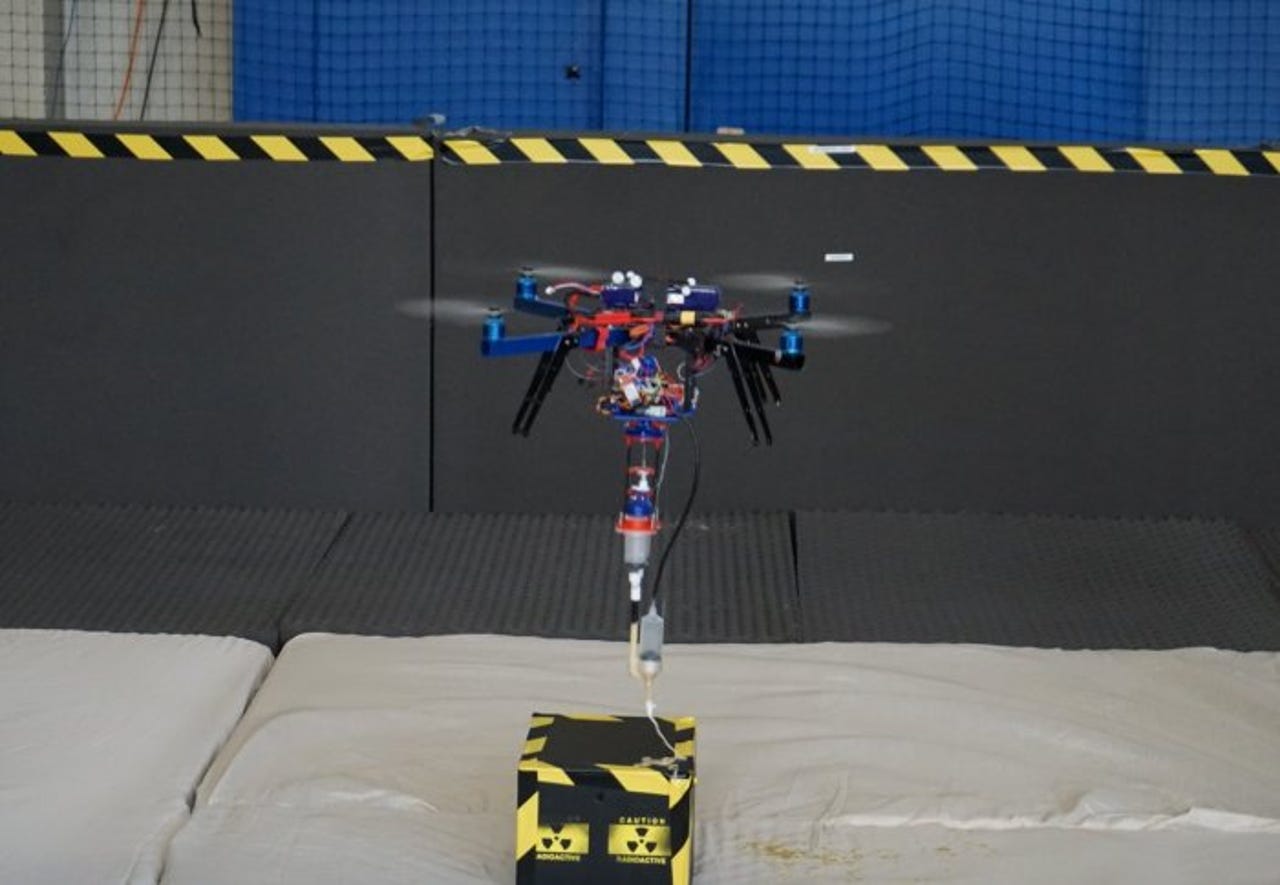World's first flying 3D printer spits foam


Little birds called swiftlets build their cup-shaped nests using their own saliva. Inspired by their nest building, researchers have developed an aerial robot with 3D printing capabilities.
"Swiftlets are like beautiful flying factories that can navigate often treacherous, dark environments to find a suitable place to build nests. Amazingly, they carry inside of them all the materials they need to build their own home," Mirko Kovac from Imperial College London says in a news release. "Robots that mimic these birds could have enormous benefits, helping humans in construction and in hazardous situations."
Using off-the-shelf parts, Kovac and colleagues developed the 3D printer Micro Aerial Vehicle (MAV), which flies and hovers in the air to build itself a nest out of not spit, but foam. The underbelly of the quadcopter (with four blades) contains two canisters of chemicals that create polyurethane foam when mixed, as well as a printing module to deliver the foam. The foam can be used to build simple structures and repair facilities. For example, the tiny, unmanned vehicles could patch up damaged offshore wind farms in remote, hard-to-reach locations or maybe seal up leaks in nuclear power plants.
Additionally, the texture of the polymer exuded from the 3D printer lets it create grippers that stick onto objects and make them transportable. This means that the MAV could be used to pick up and remove bombs or dispose of hazardous materials like radioactive waste from crippled reactors -- without exposing humans to danger in hostile environments.
External sensors (including 16 infrared cameras) on the quadcopter feed information to a laptop, which then processes the information and sends flight and extrusion instructions back via an onboard processor. When a target's coordinates are programmed in, the MAV uses GPS to direct itself there, and then it lowers an arm and squirts its foam. After the foam hardens, the quadcopter (or another drone) can take the contained radioactive waste, for example, to a safe place and dispose of it. New Scientist has a great little video of the action.
The team has also developed a hexacopter (six rotors) that can land on the foam and waits for it to dry before flying off with it. They've also got a different version that carries hacked Kinect cameras that can survey the environment and work out where to land. "Like in nature, the robots will have specialized functions and division of labor," Kovac tells Gizmag. "Using swarm intelligence, the robots will be able to perform very complex tasks of autonomous inspection and aerial construction effectively." For example, while an inspection drone creates a 3D scan to detect damage, a second swarm of construction drones repairs the structure with aerial 3D printing.
The MAV performs its duties more or less autonomously, although it can only fly in a controlled environment, like an indoor lab. The next step will be to get the MAV to fly autonomously in any environment. The team plans to incorporate high-speed cameras and depth sensors onboard that can act like a satellite navigation system for tracking and controlling the flight trajectory in real-world conditions.
The device was presented at the Imperial Festival in London this past weekend, and the findings will be presented at the International Conference on Robotics and Automation in Hong Kong later this month.
[Imperial College via New Scientist, Gizmag]
Image: Imperial College London
Related on SmartPlanet:
- In Japan, 3D printers create artificial bones
- $300 3D printer Kickstarter campaign raises $1 million in funding in 24 hours
- 3D printing teddy bears and other soft things
- First 3D printed car coming soon
- 3D prosthetics issued to child casualties of war in Sudan
This post was originally published on Smartplanet.com